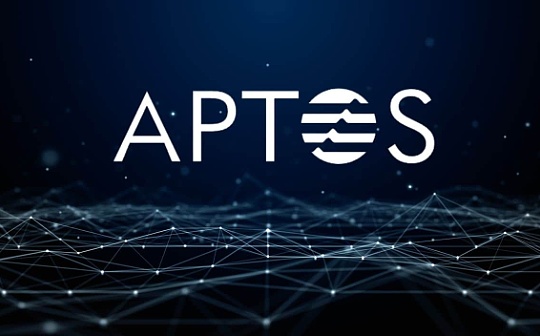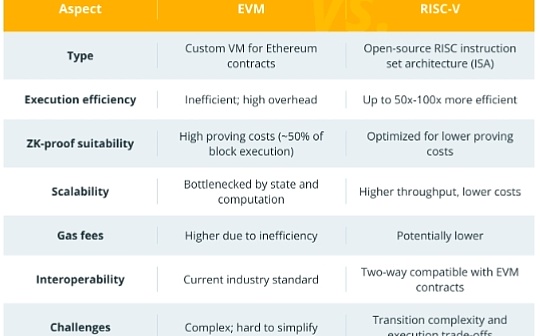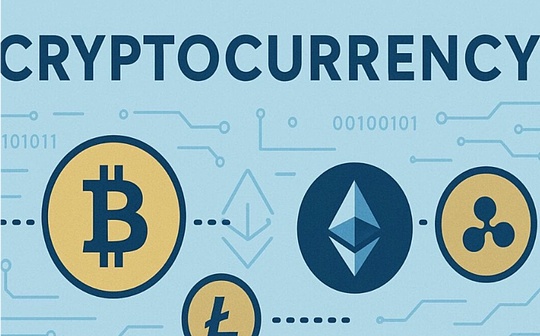
Author: Marcel Deer, CoinTelegraph; Compiled by: Tao Zhu, Bitchain Vision
1. What is Aptos blockchain?
Aptos aims to be a fast, scalable and reliable blockchain that supports decentralized applications (DApps) to accelerate the development of Web3.
Avery Ching and Mo Shaikh launched the Aptos blockchain on October 12, 2022.It is designed to achieve high throughput and low latency, which means it can process approximately 160,000 transactions per second and validate them on average in less than 1 second.
Aptos technology natively integrates the Move language to provide these fast, secure transactions, allowing developers to write smart contracts and build DApps.Aptos offers everything you need to “build your big idea” and even combines artificial intelligence to make Web3 easy for both newbies and experts.
Aptos is the native token of the Aptos crypto ecosystem.It powers blockchain through transaction fees, governance and validators.To trade on the blockchain, fees are charged to APT tokens, although these fees are very low, usually below 0.001APT or $0.0009.The initial total supply of APT is 1 billion, and the tokens circulated at the time of issuance are 130 million, and the distribution in the ecosystem is as follows:
-
51.02% allocated to the community
-
19% allocated to teams, consultants and private investors
-
16.5% allocated to the Foundation
-
13.48% allocated to investors
By 2031, the total supply of APT will increase to 1.5 billion.
The project has grown exponentially since its launch, with a multi-billion dollar market cap and became the top 25 tokens in October 2024.
Do you know?Aptos’ two founders, Mo Shaikh and Avery Ching, both worked for Meta (Facebook)’s Diem team, formerly the blockchain project Libra.This motivates them to create Aptos without having to be tethered to red tape like they do in large organizations.
2. How does the Aptos blockchain work?
Aptos uses the Move smart contract programming language, allowing the use of a parallel execution engine called Block-STM.
The total number of transactions per second (TPS) for most blockchains is limited because they use serial transactions.This means that tasks are executed one at a time in order.The Aptos blockchain has Block-STM and parallel transaction processing functions, which can conduct multiple transactions at the same time, thereby greatly improving network TPS.
The Aptos consensus mechanism uses Proof of Stake (PoS) in combination with a unique Byzantine fault-tolerant BFT consensus protocol for validators to collectively process transactions.Aptos handles all transactions simultaneously.This is done by capturing snapshots of the current state, then processing them in parallel, and then verifying them again.

While this provides faster speeds, it can be a more expensive approach to handling and presents challenges in preventing transactions from breaking each other.Failed transactions are terminated using Software Transaction Memory (STM) and re-execute to manage any conflicts.
Do you know?Aptos is one of the most funded blockchain projects, raising over $200 million from companies such as Andreessen Horowitz (a16z), Coinbase Ventures and FTX Ventures.FTX Ventures then led another $150 million in funding.
3. Advantages of Aptos Blockchain
Aptos is one of the most advanced blockchains, with low latency, high throughput and low fees, and is an ideal blockchain for developers who pursue speed and efficiency.
-
High performance and cost-effectiveness:Aptos provides almost instant response time, allowing transactions to be completed in less than a second, typically with fees of less than $0.0005.As a background, the network can cast 1 million NFTs in 90 seconds!
-
Developer friendly:The native Move programming language is good for builders.It is easy to get started, provides a safe and efficient environment, and simplifies the process of creating new DApps on Aptos.
-
Technological innovation:The integration of PoS and BFT and Block-STM, Formal Verification and Random APIs in Aptos distinguishes blockchain from other networks while improving its scalability and performance.BFT refers to the ability of a system to continue to function properly even if some participants (within a certain limit) malicious behavior or failure.It ensures that consensus can be reached even if some validators are unreliable.
-
Security:The addition of Move Prover can be used as a formal validator to check the behavior of Aptos smart contracts written on the blockchain.This helps provide strong security for applications such as DeFi protocols, gaming, and high-capacity NFT transactions.
-
Community Support:Aptos has built a vibrant and extremely supportive community and is creating an exciting collaborative ecosystem.These include a founding team that keeps its promises, over 350 developers joining the project, and over 500,000 X fans.
Do you know?Fast completion, transaction speed and high throughput, and low gas are the reasons why projects like SushSwap and PancakeSwap choose Aptos over other blockchains.
4. Aptos blockchain use cases
Organizations around the world use Aptos and over 180 DApps to solve complex challenges and provide innovative solutions.
-
game:Aptos provides smooth gaming speed and secure asset storage.Developers can create immersive gaming experiences while enabling true ownership and portability of in-game assets.
-
NFT:Built on Aptos provides unlimited creative freedom to design a variety of NFT series that already include Bruh Bears and MAVRIK NFT.
-
social contact:Web3 will give users complete control over their digital social footprint.Aptos helps bring that power back to people through on-chain social media apps like Chingari.
-
entertainment:Fans and creators can interact more privately than ever before.Whether it’s buying and selling tickets through the Aptos network, winning collections or sharing souvenirs.
-
DeFi:Fast and cheap transactions combined with smart contracts make Aptos the leading place to build DeFi applications.Mastercard is even building an authentication tool on the network called Mastercard Encrypted Credentials.
Do you know?Both Mastercard and Visa are experimenting with blockchain solutions, especially to facilitate cross-border payments.Visa has been experimenting with settlements on Solana and Ethereum, while Mastercard is developing platforms such as crypto credentials and multi-token networks (MTNs) to make the ecosystem more secure and interoperable.
5. The future prospects of Aptos blockchain
Attracting developers to build on the web is crucial to the long-term success of the project and maintaining market competitiveness.
The Aptos Foundation continues to drive blockchain innovation on the web, and is committed to building a future environment with higher transaction speeds and cost-efficiency to attract more developers.
A key feature of Aptos is the growth of the ecosystem.While most of the competitors are one step ahead, Aptos has had an incredible trajectory since its launch in 2022, attracting developers and large DeFi projects to its platform.In just two years, the Aptos blockchain has attracted more than 180 projects, including DeFi operators such as PancakeSwap, NFT oracles such as SupraOracles, and launchpads such as BuilderDAO.
In addition to a strong community, Aptos is eager to be at the forefront of future trends in blockchain and continue to stand out.New integrations like artificial intelligence could revolutionize multiple areas, including automation in the DeFi sector and attracting new users.
Aptos’ scalability is often touted as the most impressive part of the project.While some blockchains are still plagued by disruptions, low throughput constraints and high costs, Aptos has become the cornerstone of Web3’s future scalability through novel innovation and smart contract design and development.








